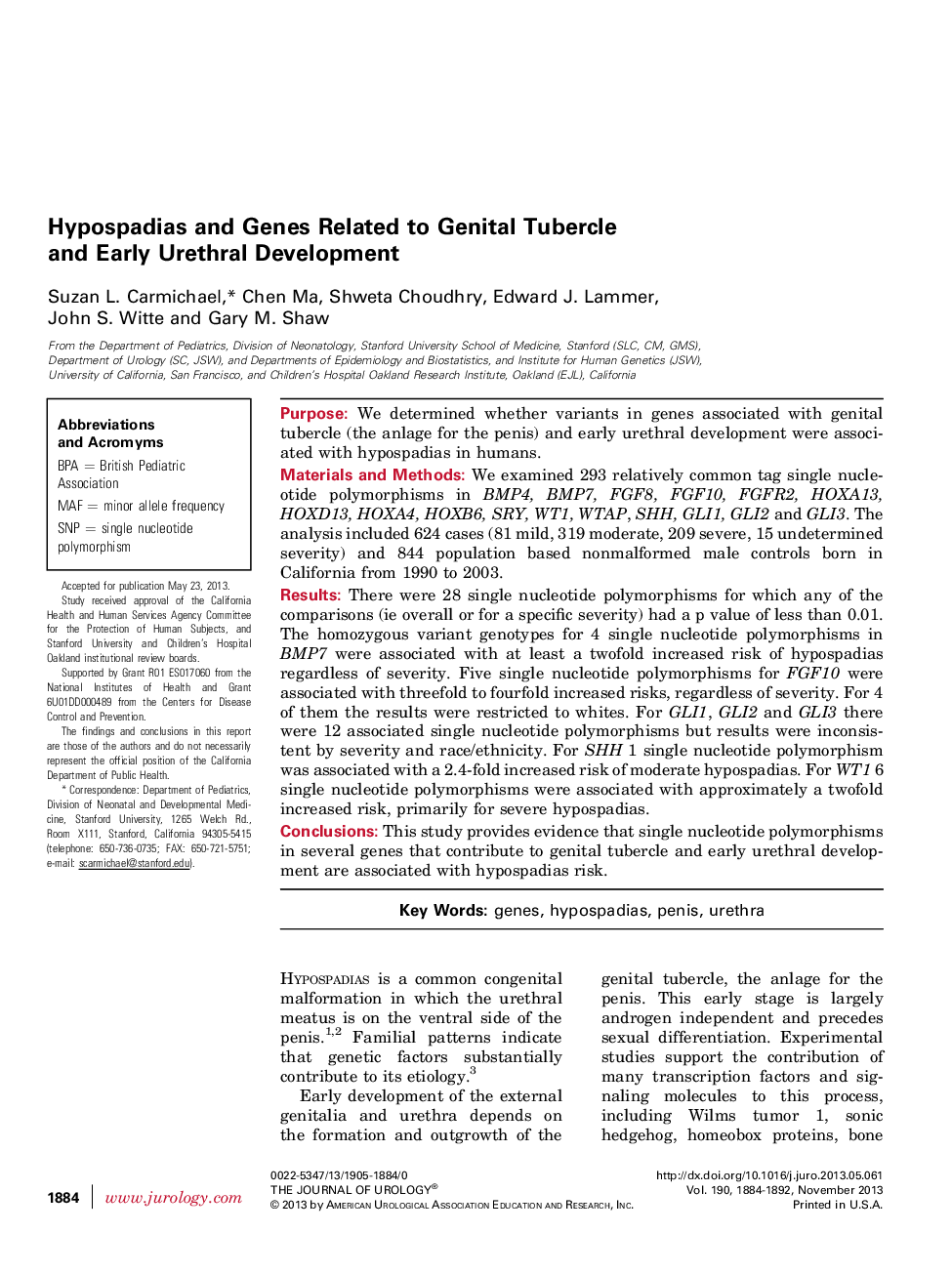| Article ID | Journal | Published Year | Pages | File Type |
|---|---|---|---|---|
| 3861887 | The Journal of Urology | 2013 | 9 Pages |
PurposeWe determined whether variants in genes associated with genital tubercle (the anlage for the penis) and early urethral development were associated with hypospadias in humans.Materials and MethodsWe examined 293 relatively common tag single nucleotide polymorphisms in BMP4, BMP7, FGF8, FGF10, FGFR2, HOXA13, HOXD13, HOXA4, HOXB6, SRY, WT1, WTAP, SHH, GLI1, GLI2 and GLI3. The analysis included 624 cases (81 mild, 319 moderate, 209 severe, 15 undetermined severity) and 844 population based nonmalformed male controls born in California from 1990 to 2003.ResultsThere were 28 single nucleotide polymorphisms for which any of the comparisons (ie overall or for a specific severity) had a p value of less than 0.01. The homozygous variant genotypes for 4 single nucleotide polymorphisms in BMP7 were associated with at least a twofold increased risk of hypospadias regardless of severity. Five single nucleotide polymorphisms for FGF10 were associated with threefold to fourfold increased risks, regardless of severity. For 4 of them the results were restricted to whites. For GLI1, GLI2 and GLI3 there were 12 associated single nucleotide polymorphisms but results were inconsistent by severity and race/ethnicity. For SHH 1 single nucleotide polymorphism was associated with a 2.4-fold increased risk of moderate hypospadias. For WT1 6 single nucleotide polymorphisms were associated with approximately a twofold increased risk, primarily for severe hypospadias.ConclusionsThis study provides evidence that single nucleotide polymorphisms in several genes that contribute to genital tubercle and early urethral development are associated with hypospadias risk.
